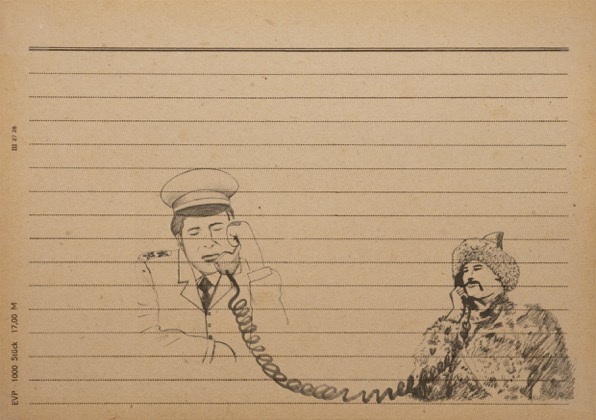
A Possible History II: Turkish Heroes, Chinese Knick Knacks
2015
Video installation, 35′ 41”, English
Developed for the 14th Istanbul Biennial
The video installation A Possible History / Turkish Heroes, Chinese Knick Knacks by Esra Ersen is a historical investigation by the main protagonist E. In this video the journeys leads through the times and through the historic landscapes of identity politics of republican turkey. The Turkish nation seems at one with the army, and one can sense nationalist sentiments in the manner of constructing the narrative. E starts with focusing on the Military Museum showing viewers the complexity of the story about the national identity of the Turks, since it seems to be also the social history of the republic.
There are two questions appearing: when was this heroic national mythology construed and imposed upon the viewers? The second, more important one, emerges in the background: by whose order are certain aspects of the visual culture are being exposed, while others are concealed – those undesired under the political circumstances valid at the moment. Visual culture is a difficult terrain to walk through; after all, it embraces the majority of aspects related to human existence in the world. A Possible History detects these relations, indicating that the “war of images” that unfolds everywhere in TV series, comic books and coursebooks, and – of course – museum rooms. There is the paradox that there were orientalists who paved the way for Turkish national identity, modern mythology and its visual dimension. E mentions the Frenchman, Léon Cahun, and the Hungarian Armin Vánbéry.
Orientalism, as the Western way of perceiving the East, in which a Turk is a warrior on a wild horse pacing through the steppe or a battleeld, only infected the collective imagination of the citizens of the former Ottoman Empire after orientalists showed them the Turk, it took some time for it to be accepted as the familiar ancestor.
Culture can be understood as a eld, on which a constant struggle for meaning takes places, as tools for creating a national mythology and assuring the recipient that the Turkish identity is based on this narrative, mostly related to military power. Both of the Possible History videos are non-intrusively educational since – by inquiring about the visual representation of politics and nationality – they develop competence and modes of visual thinking in the viewers. Possible History by Esra Ersen could be described as “counter-visualization” or visual rebellion – after all, the artist unveils the “cracks”, “scars” and “stitches” in the social historical-national narrative by applying subversive techniques of representation.
Esra Ersen
With serene subversion, Esra Ersen’s work is based on an empirical and analytical study of social situations through culture, myths, ritual, and economy. She applies a methodology of micro-events borrowed from documentary filmmaking and anthropological investigation. She consistently explores the relationship between the individual and society, highlighting how identities are formed and changed, how the other’s perception and fixed clichés influence our self-perception. Whether working in photography, performance, video, or on installation pieces, she often reacts to or uses the specific location of her activity to formalize her investigations.
Esra Ersen lives and works in Berlin. Her works have been widely shown internationally, in various solo- and group exhibitions. She has participated in: 14th Istanbul Biennial, Istanbul (2015); 27th São Paulo Biennial (2006); the 4th Liverpool Biennial (2006); 8th Istanbul Biennial (2003); The 4th Kwangju Biennial (2002); Manifesta 4, The Europan Biennial of Contemporary Art, Frankfurt (2002); 4th Istanbul Biennial (1995). abcdef
